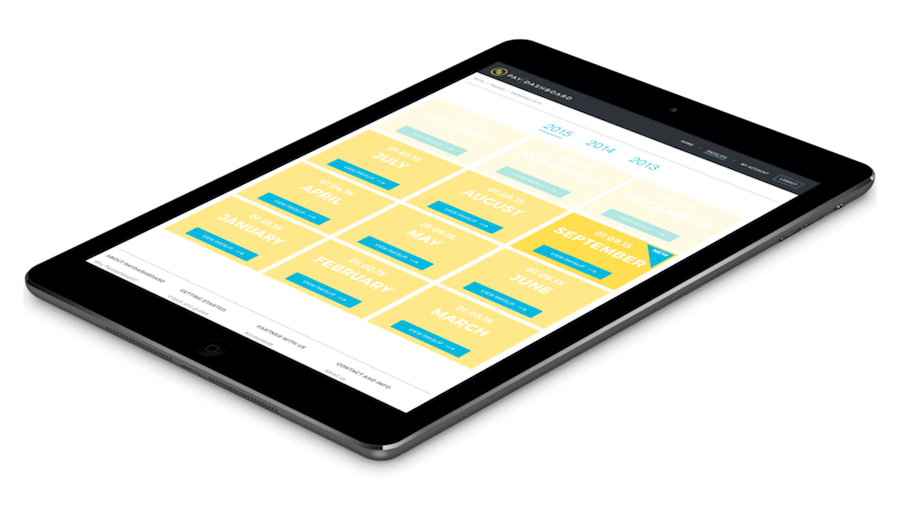- September 1, 2019
- Posted by: Gary Parsons
- Category: Pay, Reward & Benefits

What exactly goes into every payslip your employees receive? Or, more importantly, what’s coming out of their pay? We’ve broken down a UK-standard payslip to show you exactly where the money goes on payday.


Necessary Information
This information must be included in any payslips provided to employees, as per government legislation.
Total Gross Pay
This figure shows the amount of total pay you have received for the work period (typically one-month) before any deductions have been applied. This will either be represented as a salaried figure or as an hourly rate.
Total Net Pay
This will show the amount of ‘take home’ pay received for the employed period. This figure will be the calculation of all deductions from your gross pay.
Method Of Payment & Pay Date
There are multiple methods used to pay an employee. This should detail how the employee has been payed (bank transfer, cash, etc.). The most common form of payment method is BACS, though other methods can be found on your payslip. The date of payment must also be shown clearly on the payslip.
Deductions
A breakdown of each deduction from your gross pay is required. Each deduction will be separately listed with a value. Deductions will include tax and national insurance, though can often include student loan payments, pension contribution, union fees and so forth.
Additional Payslip Information
This information is not strictly required on a payslip but can often be helpful for payroll records or for employees.
Employee Information
An employee number, name and address are often included on payslips to ensure accuracy and easy identification with larger payroll accounts.
Tax Code
This will show the tax code the employee pertains to. A useful inclusion in payslips, as it can help to diagnose any irregularities, especially for employees who have more than one job.
Total Pay To Date/Year
This shows a number of figures that’s been paid for the business year, notably the total gross pay, tax, national insurance contributions and pension contributions.
Deductions Explained
Deductions to an employees pay can come in a number of forms, each with individual calculations to be made on an individual basis. It’s important to know exactly how each deduction is calculated and the impact it can have on final figures.
PAYE Tax (Pay As You Earn)
Tax is paid as a percentage of gross pay, based on the tax bracket an employee’s salary falls under. Employees are typically given a Standard Personal Allowance of tax-free income totalling £11,500 (tax codes will affect this figure). This figure is deducted from an employee’s yearly estimated salary and the final percentage is calculated.
For example, an employee earning £23,500/year earns £12,000 of taxable income. The Basic Rate tax band applies here, meaning 20% of taxable income is deducted per month. Therefore, £2400 of income will be paid as tax per annum, resulting in a £200 tax deduction per month.
National Insurance
National insurance is deducted from employee wages above £157/week. 12% of earnings above this limit is deducted. Earnings above £866/week (for 2017-18) pay a reduced 2% rate.
As with PAYE tax, different rates will apply to different portions of income. Of £1000/week, £157 will not pay national insurance, £158 – £866 (£708) will pay 12%, and £867 – £1000 (£133) will pay 2%. Total national insurance contributions would equal £87.62.
Pension
The amount an employee pays into their enrolled pension scheme. Typically, this will be met with an employer contribution, which will also be shown on the payslip. The rate that will be deducted will depend entirely on the scheme employees are enrolled under.
Student Loan
This will show the student loan repayments made by an employee (if applicable). Student loan repayments are calculated using a similar premise to PAYE tax and national insurance, with repayments beginning above £21,000 at a rate of 9% (as of 1st September 2012). High wage bands incur a higher rate.
Other
Other deductions are less common, but can still be important. Examples include union contributions or share purchase schemes offered to employees by businesses. Ensure that all deductions are accurate for payslips for each employee’s circumstance.
Is That All?
For many employees, the information provided will cover their payslip successfully. However, there will always be unique circumstances that require an expert to assess and resolve, which is where we come in!
It’s more important than ever to ensure you meet government legislation regarding employee payroll; we’re experts in ensuring businesses remain fully compliant at every step of the payroll process. If you have any questions about your company payroll, need guidance on how to improve systems or are seeking to outsource, get in touch today and see how we can help.
Last Updated on 10 months by Gary Parsons





